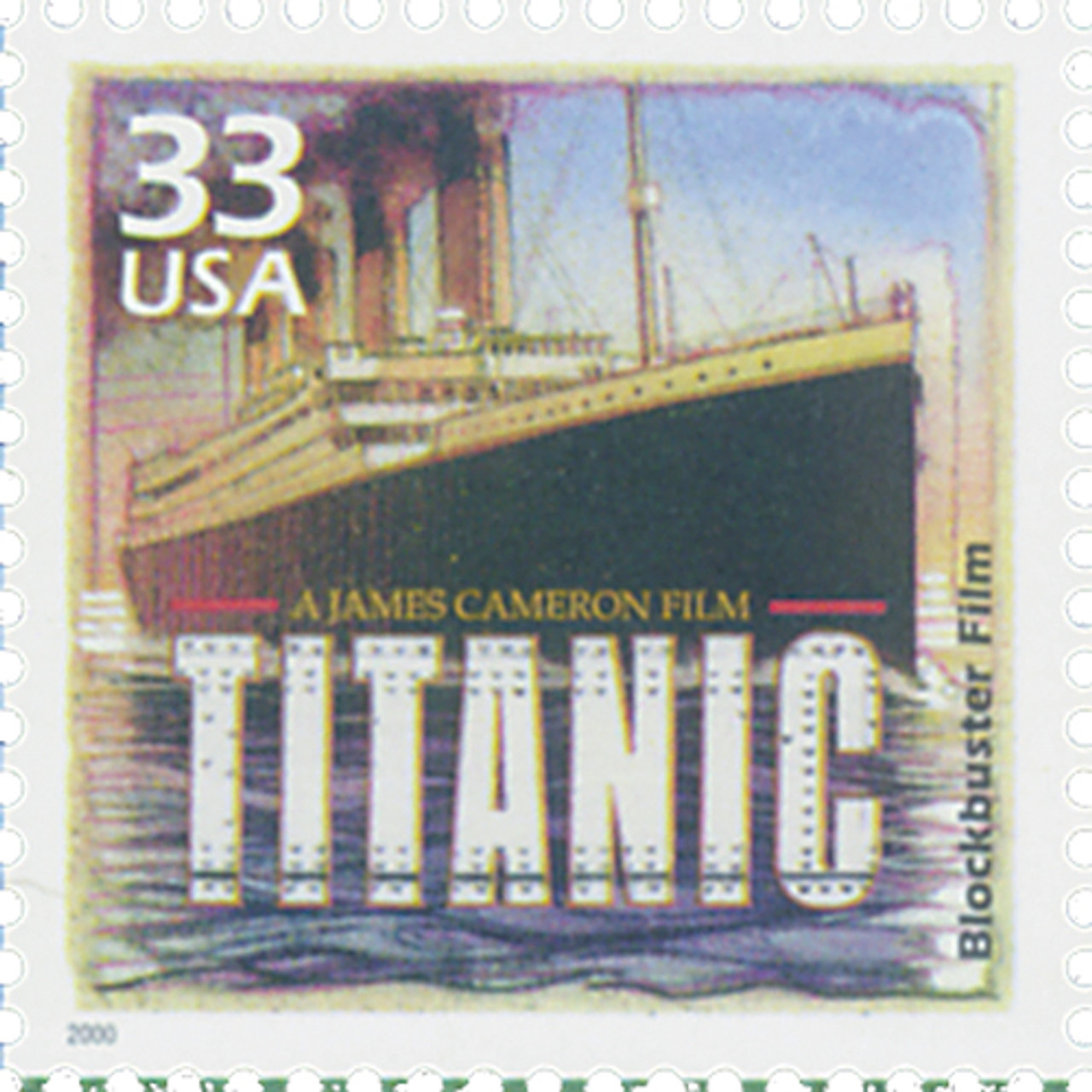
US #3191l
2000 Blockbuster Film “Titanic” – Celebrate the Century (1990s)
• Part of the tenth and final sheet in the Celebrate the Century stamp series issued from 1998-2000
• Commemorates the hit film “Titanic” (1997)
• Includes text on the back with historical details
Stamp Category: Commemorative
Se... more
US #3191l
2000 Blockbuster Film “Titanic” – Celebrate the Century (1990s)
• Part of the tenth and final sheet in the Celebrate the Century stamp series issued from 1998-2000
• Commemorates the hit film “Titanic” (1997)
• Includes text on the back with historical details
Stamp Category: Commemorative
Series: Celebrate the Century
Value: 33¢ First Class Mail Rate
First Day of Issue: May 2, 2000
First Day City: Escondido, California
Quantity Issued: 82,500,000
Printed by: Ashton Potter (USA) Ltd.
Printing Method: Offset, Intaglio
Format: Panes of 15
Perforations: 11.5
Tagging: Block tagging
Why the stamp was issued: To recall the wildly popular “Titanic” movie and its impact on the future of film.
About the stamp design: Pictures artwork by Drew Struzan of Titanic. Includes the following text on the back: “Adding romance and elaborate special effects to the tragic story of the ill-fated luxury liner, James Cameron’s 1997 film “Titanic” was a colossal success at box offices worldwide and won 11 Academy Awards, including Best Picture.”
First Day City: The First Day of Issue Ceremony was held at the Village Amphitheater of San Diego Wild Animal Park in Escondido, California.
About the Celebrate the Century series: The USPS launched the Celebrate the Century series in 1998 to mark the end of the 20th century and herald the arrival of the 21st. The series includes 10 sheets of 15 stamps (150 in total), with each honoring important moments from a different decade (1900s, 10s, 20s, 30s, 40s, 50s, 60s, 70s, 80s, and 90s). At the time of completion, it was the longest and most ambitious commemorative stamp series in US history.
History the stamp represents: The thrilling action, astonishing special effects, and romantic story of “Titanic” combined to make this film one of the most spectacular in history. It made $1.8 billion worldwide, earned a record-tying 11 Academy Awards, and sold 50 million copies on home video. “Titanic” was so popular that many moviegoers went to the theater to see it two or more times.
“Titanic” opened in the US on December 19, 1997. The story of the 17-year-old American aristocrat (Rose) who falls in love with a destitute free spirit (Jack) captivated audiences. Director James Cameron wanted to keep all the details related to the sinking of the Titanic true while telling the fictional love story.
The film also broke records as the most expensive made to date. Initial projections said “Titanic” would cost $110 million. The escalating costs led Cameron to sacrifice his paycheck to get the over $200 million film made as he had envisioned it.
A special 40-acre studio was built in Rosarita Beach, Mexico, for the filming of “Titanic.” A 780-foot replica of the ship was built there. In an effort to keep the story as historically accurate as possible, custom-made lighting fixtures, furniture, china, and other items were created – and later destroyed – when the ship “sank.”














